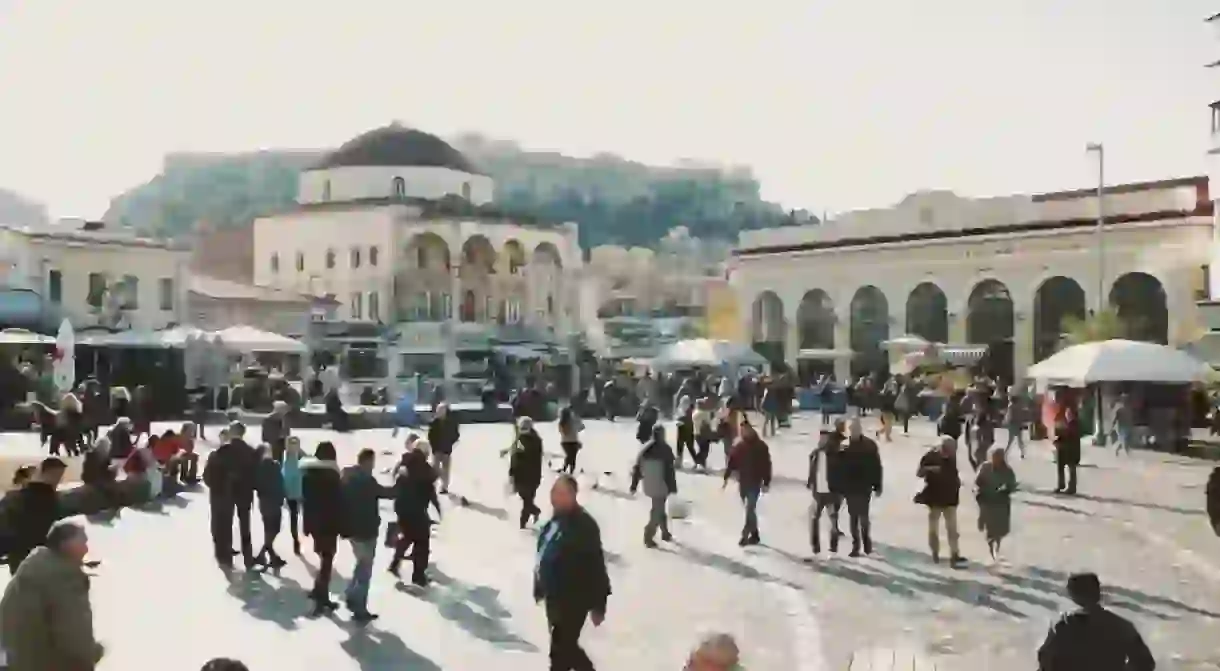A History of Athens' Monastiraki in 60 Seconds

For many Athenians, Monastiraki is just another stop on their way to their daily commute, an important transport hub to switch from one metro line to the other. But there is more to Monastiraki than just a central meeting point in the heart of the city. Here is the history of one of the most iconic squares in the Greek capital.
A blend of architectural styles, eras and cultures, Monastiraki Square allows visitors to view the full history of Athens in 30 seconds and provides a 360° view. Home to restaurants, cafes, souvenir shops, a historic mosque, ancient ruins and a metro and train station, it is conveniently located between Plaka, Thissio and Psyrri.
The metro station on the square dates back to 1895 when the above-ground metro was constructed. It was actually a train, which is why, today, Athenians still call it ‘treno’ (train). It connected Piraeus Port to Athens and Kifissias, then to another village in the north of Athens. Today, the underground metro line that connects the airport to the city passes through Monastiraki as well, making it a major hub. And just like anywhere else in Athens, the construction of the metro led to the discovery of ancient ruins, some of which are on display in the station.
Monastiraki Square is also home to the Tzistarakis Mosque, built in 1759. It served as a crafts museum in 1915 and after 1975, it began to house a fascinating collection of pottery from Greece, Turkey and Cyprus. The mosque is adjacent to the remains of Hadrian’s Library, which was built around 132 AC by emperor Hadrian, as well as the Roman Forum.
On the square, visitors can admire the sunken Church of Pantanassa, the only remaining part of the monastery (or rather nunnery) that existed on location during the Byzantine period and gave the area its name (Monastiraki means little monastery). But for many, Monastiraki is mostly synonymous with antiques and old treasures thanks to the flea markets and antique shops that dot the area towards Abyssinia Square.
It is also the ideal place to find unique souvenirs, vinyl and other memorabilia for the discerning traveller. Whether you are just passing through or are on the lookout for the best souvlaki in the area (we recommend Savvas, one of the oldest souvlatzidiko there), make sure to take the time to take in the unique, bohemian atmosphere of this central spot.













